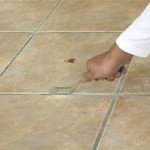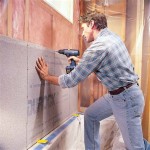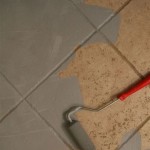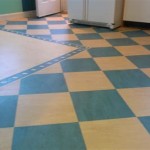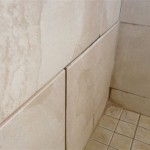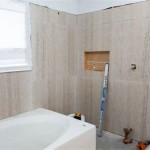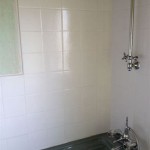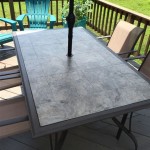Do I Need Backer Board For Floor Tile On Concrete Slab In Singapore?
The question of whether backer board is necessary when tiling directly onto a concrete slab foundation in Singapore is a common query among homeowners and contractors. Addressing this concern requires understanding the specifics of Singapore's climate, construction practices, and the properties of both concrete slabs and backer boards. While direct tiling onto concrete is a feasible option, several factors may make the installation of a backer board a preferable or even a necessary step.
Singapore's climate presents unique challenges to construction materials. High humidity, consistent temperatures, and the potential for heavy rainfall create conditions that can affect the performance of tiled floors. Concrete slabs, while generally stable, can be susceptible to moisture intrusion and minor movement over time. These environmental factors influence the decision of whether to install a backer board prior to tiling.
Direct tiling onto concrete involves applying a thin-set mortar directly to the cleaned and prepared concrete surface, followed by the tile installation. This method can be cost-effective and relatively straightforward. However, success with direct tiling relies heavily on the condition of the concrete slab and the quality of the installation procedures.
Backer boards, typically made of cement or fiber cement, provide a stable and consistent substrate for tile installation. They are designed to be resistant to moisture, mold, and rot, and they offer an improved bonding surface for thin-set mortar. The installation of backer board adds an extra layer of protection and can address some of the inherent challenges associated with tiling directly onto concrete slabs.
Several potential issues can arise when tiling directly onto concrete. Cracking of the tile due to movement in the concrete slab is a primary concern. Moisture transmission through the concrete can also lead to problems with the adhesive bond and potential efflorescence. Unevenness in the concrete surface can create difficulties in achieving a level tiled floor. Addressing these issues is critical for ensuring the long-term durability and aesthetic appeal of a tiled floor in Singapore.
Understanding Concrete Slab Conditions in Singapore
The suitability of a concrete slab for direct tiling depends heavily on its existing condition. In Singapore, where construction often occurs rapidly to meet housing demands, newly poured concrete slabs may not always be perfectly cured or level. Proper curing is essential to minimize shrinkage and cracking in the concrete. An insufficiently cured slab will continue to shrink and potentially crack after tiling, leading to tile failure.
Another consideration is the levelness of the slab. Concrete slabs are not always perfectly flat or even. Variations in height can create challenges during the tiling process, resulting in uneven grout lines or tiles that rock. While self-leveling compounds can be used to address minor imperfections, significant unevenness may require more extensive remediation.
The presence of cracks in the concrete slab, whether hairline or more substantial, also impacts the decision to use backer board. While some minor hairline cracks can be addressed with crack isolation membranes applied directly to the concrete, larger cracks may indicate underlying structural issues that require professional assessment and repair. Ignoring these cracks and tiling directly over them will inevitably lead to cracking in the tile installation.
Furthermore, concrete slabs can be porous and susceptible to moisture absorption from the ground. This is especially relevant for ground-floor slabs that are in direct contact with the soil. Moisture migrating through the slab can weaken the bond between the tile and the concrete, resulting in loose or detached tiles. A moisture barrier beneath the slab is ideal, but if that's absent, backer board can provide an added layer of protection.
Before considering direct tiling, a thorough assessment of the concrete slab's condition is crucial. This assessment should include checking for cracks, levelness, moisture content, and the overall integrity of the concrete. If any of these factors raise concerns, the installation of a backer board is strongly recommended.
Benefits of Using Backer Board for Tile Installation
Using backer board offers several distinct advantages over direct tiling onto a concrete slab. These benefits contribute to a more durable, stable, and aesthetically pleasing tiled floor, particularly in the challenging climate of Singapore.
One of the primary benefits is enhanced crack resistance. Backer boards provide a decoupling layer between the concrete slab and the tile, minimizing the transfer of stress caused by movement in the concrete. This reduces the likelihood of cracks appearing in the tiles due to minor shifting or settling of the foundation. In Singapore, where earthquakes and ground vibrations are infrequent but possible, this added layer of protection is beneficial.
Another significant advantage is improved moisture resistance. Cement-based backer boards are inherently water-resistant, preventing moisture from penetrating the underlying concrete and potentially damaging the adhesive bond. This is particularly important in bathrooms, kitchens, and other areas prone to moisture exposure. Backer board also helps to create a more stable environment for the mortar to cure properly, leading to a stronger and longer-lasting bond.
Backer boards also provide a consistent and uniform surface for tile installation. They eliminate minor imperfections in the concrete slab, creating a level and even substrate for the tiles. This simplifies the tiling process and ensures a more professional-looking finish with consistent grout lines and properly aligned tiles. The uniform surface also enhances the adhesion of the thin-set mortar, resulting in a stronger bond and reduced risk of tile slippage.
Finally, backer boards offer increased insulation. While not a primary factor in Singapore's climate, the added layer of insulation can contribute to a slightly more comfortable floor temperature, particularly during cooler months. This benefit is more pronounced in air-conditioned environments, where the insulation can help to maintain a more consistent temperature.
Factors Influencing the Decision in Singapore
Several factors specific to Singaporean construction practices and environmental conditions influence the decision of whether to install backer board. These factors should be carefully considered when planning a tile installation project.
The age and condition of the building are crucial considerations. Older buildings may have concrete slabs that have experienced significant movement or moisture exposure over time. In such cases, backer board is highly recommended to provide a stable and reliable substrate for the tile. Newer buildings may have more stable slabs, but proper curing and levelness should still be verified.
The intended use of the tiled area is also important. High-traffic areas, such as commercial spaces or heavily used residential kitchens, are more susceptible to wear and tear. Backer board provides added durability and resistance to cracking in these areas. Bathrooms and areas prone to moisture exposure will also benefit significantly from the moisture-resistant properties of backer board.
The type of tile being used can also influence the decision. Larger format tiles, which are increasingly popular, are more prone to cracking if installed on an uneven or unstable surface. Backer board provides the necessary support and stability for these larger tiles, reducing the risk of cracking and ensuring proper alignment.
The specific location within Singapore can also play a role. Areas near the coast or with higher humidity levels may experience greater moisture intrusion through the concrete slab. Backer board provides an extra layer of protection against moisture damage in these areas.
Ultimately, the decision of whether to use backer board should be based on a comprehensive assessment of the concrete slab's condition, the intended use of the tiled area, the type of tile being used, and the specific environmental conditions. Consulting with a qualified tile installer is highly recommended to ensure that the most appropriate installation method is chosen for each specific situation in Singapore.

5 Tile Alternatives To Concrete Screed Floors News Events Hafary

Singapore Ceramic Tile 600x600 Living Room Floor Wear Resistant R11 P4 Non Slip

5 Tile Alternatives To Concrete Screed Floors News Events Hafary

How To Lay Porcelain Tile On Concrete Floor A Diy Guide

Grouting Types In Singapore Swc Construction

Water Proof Fiber Cement Board Buy Boards From Suppliers Manufacturers Okorder Com

Balcony Waterproofing Detailed Solution Swc Construction

Floor Tile Adhesive Best Type For Each Case

Singapore Wood Grain Cement Board Placa Fibrocimento 18mm Fiber For Floor

What Is Tile Adhesive An Ultimate Guide
Related Posts

